 To enhance service speed and avoid tariff delays, we've opened a US warehouse. All US orders ship directly from our US facility.
To enhance service speed and avoid tariff delays, we've opened a US warehouse. All US orders ship directly from our US facility.
| Cat. No. | Product Name | Field of Application | Chemical Structure |
|---|---|---|---|
| DC76796 | Tetramisole |
Tetramisole is an orally active, selective inward rectifier potassium channel agonist with an EC50 of approximately 30 μM for the Kir2.1 subunit. Tetramisole is also an anti-nematode agent that blocks neuromuscular transmission by non-competitive depolarization. Tetramisole promotes the forward transport of Kir2.1 channels, hyperpolarizes the resting potential (RP), shortens the action potential duration (APD), inhibits intracellular calcium overload and the PKA signaling pathway, and exerts anti-arrhythmic and anti-myocardial remodeling activities. Tetramisole can be used in cardiac electrophysiology research and research related to myocardial ischemia and heart failure.
More description
|

|
| DC76795 | SKP-451 |
SKP-451 is an ATP-sensitive potassium (K+) channel agonist. SKP-451 activates the ATP-sensitive K+ channels, promotes the efflux of K+, causes membrane hyperpolarization, and inhibits the influx of Ca2+, thereby relaxing the vascular smooth muscle. SKP-451 relaxs the canine coronary artery, rabbit basilar artery, and vertebral artery. SKP-451 also reduces the mean arterial blood pressure of conscious spontaneously hypertensive rats (SHR). SKP-451 is promising for research of cardiovascular diseases.
More description
|

|
| DC76794 | Opakalim |
Opakalim is the activator for potassium channel and exhibits antiepileptic activity.
More description
|

|
| DC76793 | ONO-TR-772 |
ONO-TR-772 (VU6018042) is a selective TREK inhibitor (IC50: 15 nM). ONO-TR-772 enhances recognition memory in the MK-801-stimulated NOR mouse model. ONO-TR-772 can be used in the study of diseases related to cognitive impairment.
More description
|

|
| DC76792 | ONO-2920632 |
ONO-2920632 is an orally active and central nervous system (CNS)-penetrant TREK activator, with EC50 values of 0.3 µM and 2.8 μM for TREK-1 and TREK-2, respectively. ONO-2920632 exhibits selectivity for other K2P channels (>91-fold selective versus TASK1, TASK2, TASK3, TRAAK, and TWIK2; 31-fold selective versus TRESK). ONO-2920632 possesses analgesic effects and can be used in research on pain, migraine, and neurological disorders.
More description
|

|
| DC76791 | Mephetyl tetrazole |
Mephetyl tetrazole is a potassium channel Kv1.5 blocker, with an IC50 of 330 nM. Mephetyl tetrazole can be used for the research of cancer.
More description
|

|
| DC76790 | Lumula |
Lumula (Maxeyprost) is an ethyl amide derivative of Unoprostone. DG013B formate has weak affinity for ERAP1 and ERAP2 and is often used as a negative control to study the binding properties of DG013A and its analogues to ERAP1 and ERAP2.
More description
|

|
| DC76789 | GPV574 |
GPV574 is a derivative of the antiarrhythmic compound propafenone, capable of inhibiting HERG channels (IC50 = 5.04 μM).
More description
|

|
| DC76788 | Ebio3 |
Ebio3 is a selective potassium channel (KCNQ2) inhibitor with an IC50 of 1.2 nM. Ebio3 binds to the KCNQ2 channel through its hydrophobic tail, causing the S6 helix to move inward, which leads to the closure of the inner gate. The inhibitory effect of Ebio3 is also effective in pathogenic mutants of KCNQ2 (such as R75C and I238L), where it can inhibit outward currents by more than 80%. Ebio3 is expected to be used in the research of neurological diseases such as epilepsy.
More description
|

|
| DC76787 | Ebio2 |
Ebio2 is a potent KCNQ2 activator.
More description
|

|
| DC76786 | E-4031 free base |
E-4031 free base is a selective hERG potassium channel blocker for use in class III anti-arrhythmic studies.
More description
|

|
| DC76785 | BMS-191095 hydrochloride |
BMS-191095 hydrochloride is a mitochondrial KATP channel opener. BMS-191095 hydrochloride can protect the myocardium without causing vasodilation or affecting electrophysiology, by prolonging the contraction time during ischemia, improving contractile function after reperfusion, and reducing lactate dehydrogenase (LDHM) release, thereby exerting its cardioprotective effects.
More description
|

|
| DC76784 | (-)-KCC2 blocker 1 |
(-)-KCC2 blocker 1 is an enantiomer of KCC2 blocker 1 containing an acetylenic fluorobenzene substituent in the lower side chain.
More description
|

|
| DC73659 | 3hi2one-G4 Featured |
3hi2one-G4 is a highly selective small molecule activator targeting GIRK4 homomeric channels, does not activate GIRK2, GIRK1/2 or GIRK1/4 channels.
More description
|

|
| DC70158 | A293 |
A293 (AVE1231) is a potent and antiarrhythmic compound and selective inhibitor of two-pore-domain potassium channel TASK-1 (KCNK3, hK2P3.1).A293 (AVE1231) is an inhibitor of hKv1.5 currents with predominant action on channels in their open state.A293 (1 uM) prominently depolarized arterial smooth muscle and increased basal tone level and contractile responses to methoxamine of arteries from young rats but had almost no effect in adult rats.Pharmacological inhibition of atrial TASK-1 currents via A293 (AVE1231) exerts antiarrhythmic effects in vivo as well as in silico, resulting in acute cardioversion of paroxysmal trial fibrillation (AF).
More description
|

|
| DC11676 | NS15370 |
A novel, highly potent positive modulator of Kv7 channels with EC50 of 100 nM (Kv7.2-Kv7.5).
More description
|
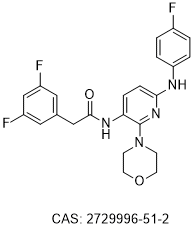
|
| DC70890 | VU0606170 Featured |
VU 0606170 (also referred to as VU0606170) is a selective inhibitor of the sodium-activated potassium channel KNa1.1, also known as Slack or Slo2.2. This compound has shown specificity for Slack channels over other related potassium channels, making it a valuable tool for studying the physiological and pathological roles of KNa1.1.
More description
|
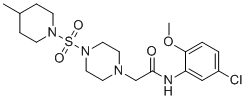
|
| DC11947 | ML418 Featured |
The first potent, selective, CNS penetrating inward rectifier potassium channel Kir7.1 (KCNJ13) inhibitor with IC50 of 0.31 uM.
More description
|
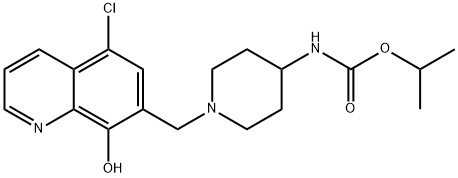
|
| DC9595 | E-4031 Featured |
E-4031 is a benzenesulfonamide antiarrhythmic agent; blocks the ATP-sensitive potassium channel.
More description
|
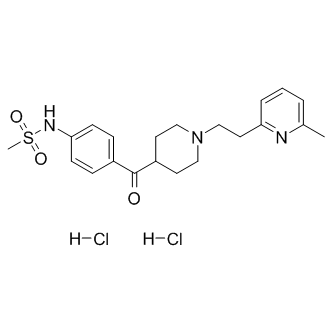
|
| DC70327 | CTIBD Featured |
CTIBD is a novel potent activator of the BKCa channel with EC50 of 3.9 uM.CTIBD showed significantly higher potency compared with three other known BKCa activators: NS 1619, NS 11021, and rottlerin.CTIBD induced a reversible potentiation of macroscopic outward currents of the BKCa channel, CTIBD activates both rSlo/rβ1 and rSlo/rβ4 coexpressed channels mainly by decreasing the closing rate of the channel.CTIBD concentration-dependently reduced ACh-induced contractions in isolated rat urinary bladder strips. CTIBD effectively restored frequent voiding contraction and lowered voiding volume without affecting other bladder function parameters in acetic acid-induced overactive bladder (OAB) model (i.p. 20 mg/kg).
More description
|
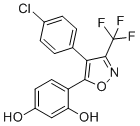
|
| DC73665 | KCNQ2 activator Ebio1 Featured |
Ebio1 is a selective voltage-gated potassium channel KCNQ2 activator. Ebio1 activates KCNQ2 by generating an extended channel gate with greater conductance at a saturation voltage (+50 mV).
More description
|
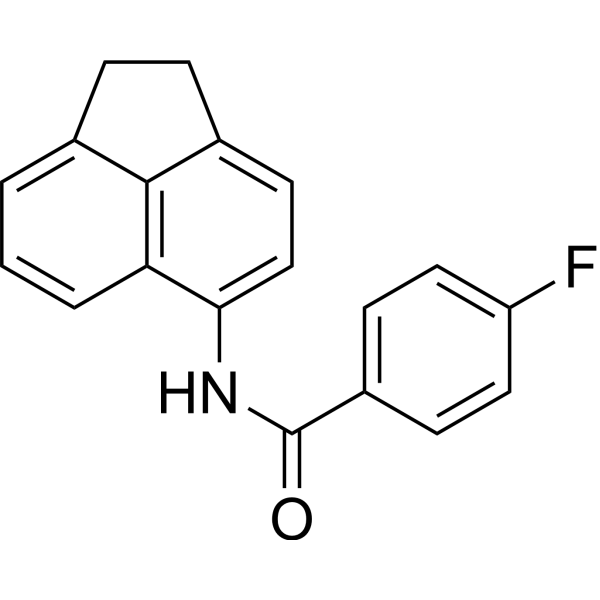
|
| DC70574 | Lu AA41178 Featured |
Lu AA41178 is a potent, pan-selective Kv7.2-7.5 opener with EC50 of 1.5, 0.6 20.5, and 37.0 uM for Kv7.2, Kv7.2/7.3, Kv7.4 and Kv7.5, respectively.Lu AA41178 displays no activity at Kv7.1 channels, has no potentiating impact on currents through GABAA ion channels, and a clean off-target profile against common cardiac ion channels.Lu AA41178 significantly increased the seizure thresholds in mice, demonstrating anticonvulsant efficacy in the maximum electroshock seizure threshold test and PTZ seizure threshold test.Lu AA41178 demonstrated antipsychotic-like activity by reducing amphetamine-induced hyperlocomotion in mice as well as lowering conditioned avoidance responses in rats, significantly reduced immobility in mouse model with antidepressant predictivity.
More description
|

|
| DC8789 | NS 11021 Featured |
NS 11021 is an activator of large-conductance Ca2+-activated potassium channels (BKCa, KCa1.1).
More description
|
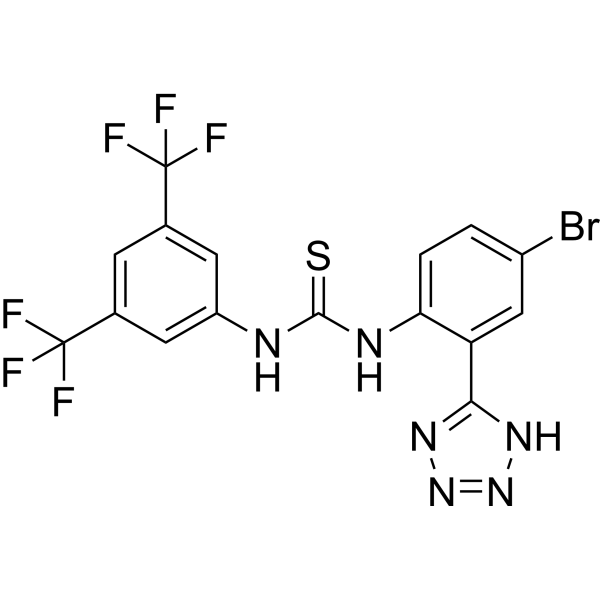
|
| DC73675 | VU0546110 Featured |
VU0546110 (VU 0546110) is a potent, selective inhibitor of the sperm-specific potassium channel SLO3 with IC50 of 1.29 uM, impairs sperm function.
More description
|
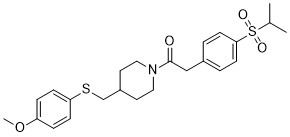
|
| DC39089 | H3B-120 Featured |
H3B-120 is a competitive, selective and allosteric inhibitor of carbamoyl phosphate synthetase 1 (CPS1) with IC50 of 1.5 μM and Ki of 1.4 μM. H3B-120 exhibits anti-tumor activity.
More description
|
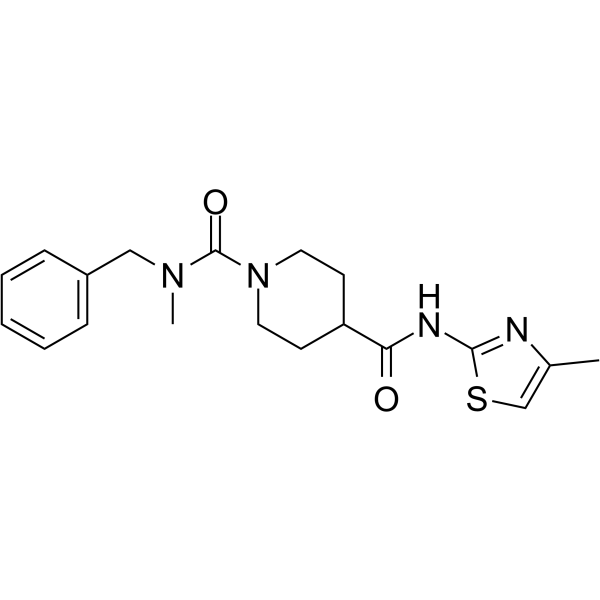
|
| DC73677 | ZVS-08 |
ZVS-08 is a selective inhibitor of the voltage-gated potassium channel KV10.1 with IC50 of 3.7 uM.
More description
|

|
| DC73676 | VU0935685 |
VU0935685 is a potent, selective inhibitor of SLACK potassium channels with IC50 of 0.32 uM in in whole-cell, voltage-clamp electrophysiology (EP) assays, demonstrates selectivity versus hERG.
More description
|

|
| DC73674 | VU0542270 |
VU0542270 is the first selective inhibitor of vascular Kir6.1/SUR2B KATP channel with IC50 of 129 nM, >300-fold selective over other members of the Kir channel family.
More description
|

|
| DC73673 | TTQC-1 |
TTQC-1 is a potent activator of the large-conductance Ca2+-activated K+ channel (BKCa channel), directly and reversibly activates the macroscopic current of BKCa channels expressed in Xenopus oocytes from both sides of the cellular membrane, increases the
More description
|

|
| DC73672 | Tamapin TFA |
Tamapin TFA salt is a venom peptide from the Indian red scorpion (Mesobuthus tamulus), potent and selective inhibitor of small conductance calcium-activated potassium channel 2 (SK2, KCNN2) with IC50 of 24 pM.
More description
|

|